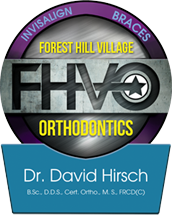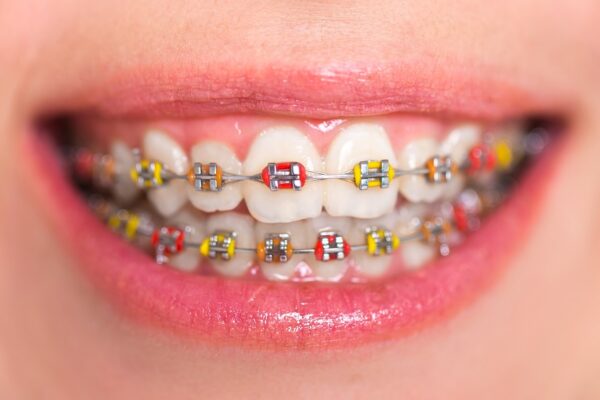Learning how to floss with braces takes a bit of practice, but you’ll be an old pro in no time with our tips, tricks, a few special tools. Although flossing is an important part of routine oral health, it takes on an even bigger role once you get braces. Learning the proper technique will save you time and keep your teeth in peak condition during your treatment.
Assembling Your Braces Tool Kit
When you get new braces, it helps to assemble a small kit with the necessary supplies. You can keep it in a small box, or even in a zipper baggie. The kit should contain things that will help if you have an emergency such as a broken wire, but mostly it is for the routine daily care of your braces. Toss it in a backpack, your purse, or briefcase.
View this post on Instagram
Now that you know why you should make a small kit, here is what you should put into it:
- Dental floss
- Floss threaders
- Interproximal brushes
- Toothbrush
- Non-abrasive, non-whitening toothpaste
- Toothpicks
- Small, clean tweezers
- Nail clippers
- A new pencil with an eraser
- Dental wax
Although most of the items are self-explanatory, we’ll go over some of the less obvious ones for you. It is important to note that you should contact your orthodontist before performing any emergency maintenance on your braces.
Quick Maintenance and Care Tips
Why do you need tweezers and nail clippers? Because sometimes the wire on your braces might break. If this happens, the wire end can cut the inside of your mouth and create problems. The tweezers can be used to fold the wire back away from soft tissue. The clippers can snip it so you can cover the pointy end with dental wax.
A pencil? Yes, a pencil, with a pristine, new eraser. This soft, but firm tool can be used to press wires down away from soft tissue to prevent cuts.
Dental wax is your new best friend. Take it everywhere. Wax can be used to cover brackets that may cause sore spots where they rub inside your mouth. If a bracket becomes loose, you can press some wax onto it to hold it in place until you can get to the office for repair.
How to Floss with Braces Using a Floss Threader
Using a floss threader makes it much easier to floss with braces. Although it may feel awkward at first, you will soon develop a routine that speeds up the process.
Start by pulling out a length of floss, usually around 18 or more inches. Holding the floss threader, pass one end of the floss into the loop. Guide the threader under or over your wire, pulling it all the way through while leaving the floss in place.
Use the floss normally to clean around the teeth all the way to the gum line. Repeat for each tooth. You can use one floss threader to complete both the top and bottom rows of teeth. They are disposable, so discard them when you finish.
Although it is much easier to floss using a threader, there might be times when you don’t have one (or you drop it on the floor mid-floss). Don’t despair — you can still floss.
How to Floss with Braces Without a Floss Threader
This is much easier if you can use a mirror that allows you to see where the floss is going to guide it properly.
Start by cutting a length of floss from 18 to 24 inches long. Thread the floss between the main wire and your teeth. Floss around each tooth, making sure to go all the way to the gums.
Although it may be difficult to thread the floss, this is a necessary process. Folding over the end of waxed floss and twisting it will form a stiffer “point” to allow you to thread it through the wire easier.
After the first couple of times, you’ll be an old pro at this!
Using Interdental/Interproximal Brushes
Interdental and interproximal brushes are tiny brushes that work as a combination of a toothpick and dental floss. They should not be used to replace regular flossing. With braces, these brushes can be very useful in dislodging debris from the edges of brackets under the archwire.
One of the biggest problems with brackets and wires is that they create a lot of little nooks and crannies that make teeth cleaning more difficult. However, oral care is even more important during treatment, so tools that make it easier become lifesavers.
Some people use interdental brushes before regular brushing and others use them after. Find a routine that works for you. The most important thing is to keep your teeth clean around your brackets and wires to avoid tooth decay.
Using a Water Flossing Device
If you have a water flossing device, it can be useful in helping to keep your mouth clean. Although not a replacement for regular flossing, it is a great way to flush out stubborn food particles between your teeth and around the brackets and wires.
To use a water flossing device, begin by filling the reservoir. Put the tapered tip on the water wand and test the water pressure in the sink.
Leaning over the sink, insert the wand in your mouth and turn on the water. Closing your lips around the wand will prevent splashing, but you will need to drain excess water also. Move the flossing tool around your entire mouth, making sure to cover the gum line and areas between teeth and around brackets.
Choosing the Right Toothbrush Technique
When we first learn to brush our teeth, many of us are taught to use tiny circles on each individual tooth. You’ll still need that motion, but you will also want to add a side-to-side motion while you have braces. This will remove most of the food particles from your teeth. The circular motion should be used around each bracket.
It is important to brush thoroughly several times a day. When you can’t brush immediately after a meal, take a few seconds to rinse with plain water, swishing it around to remove as much debris as possible. Brush as soon as you can afterward.
You Will Marvel at Your New Smile
Whether you already have braces or will be getting them, Forest Hill Village Orthodontics is prepared to guide you on your adventure. Our Marvel-themed office in Toronto is a comfortable and inviting environment with a staff that is fun, knowledgeable, and compassionate.
Booking your appointment is easy with our online Appointment Request form. If you would rather speak directly with our appointment coordinator, you may call us at (416) 789-1231. You can also call if you have questions about how to floss with braces.

 (416) 789-1231
(416) 789-1231